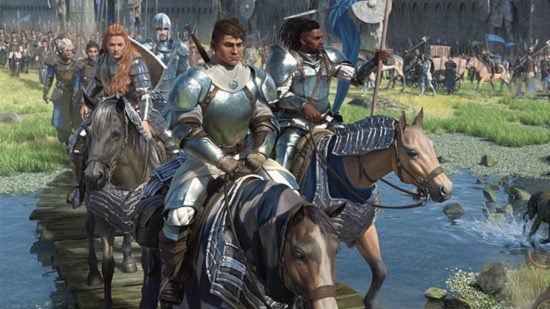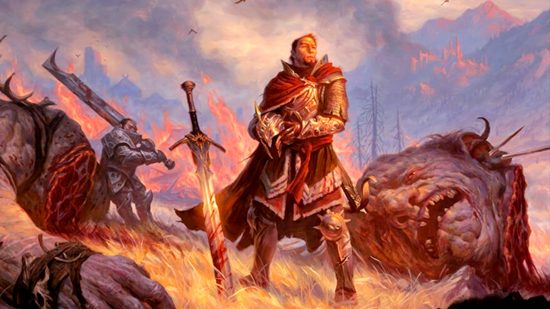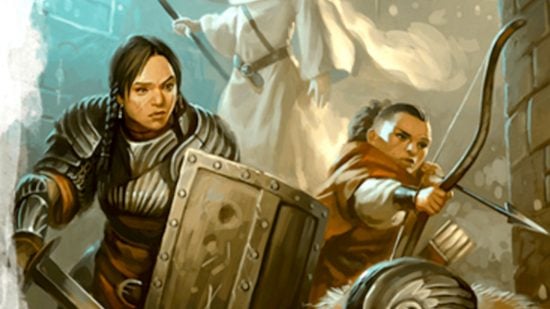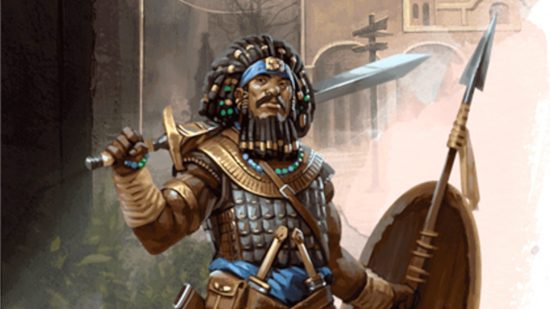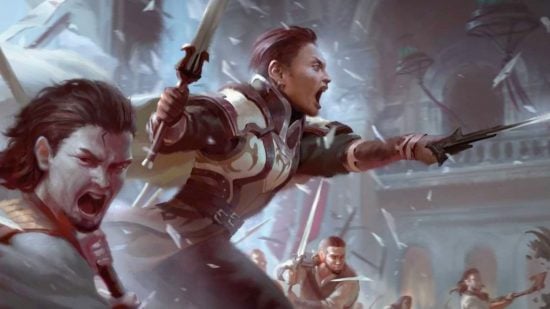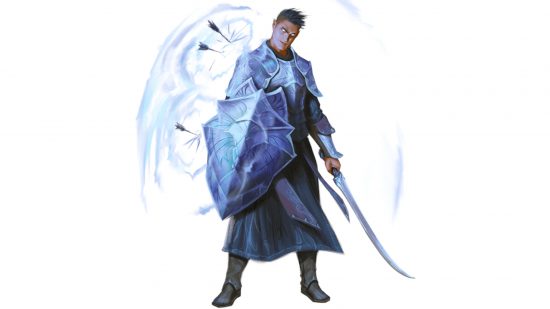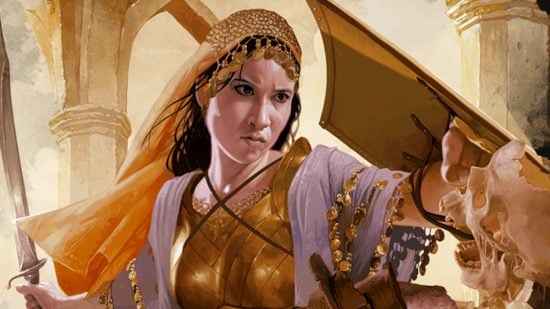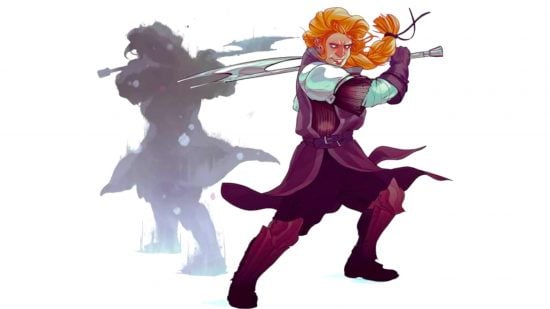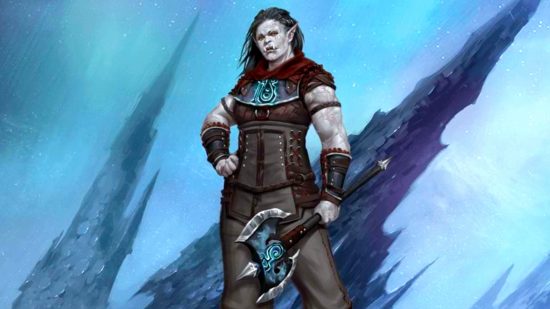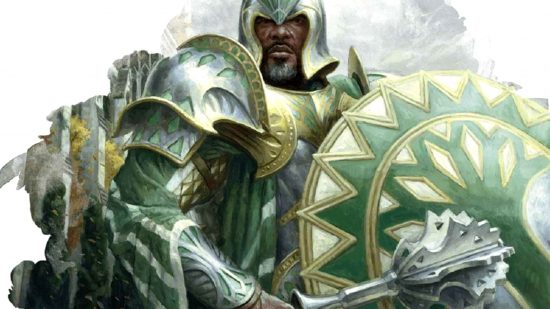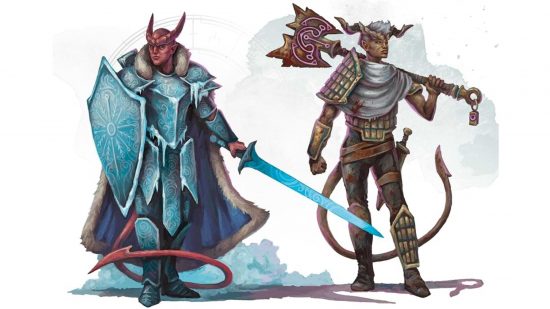At level three, you’ll make a choice from the Dungeons and Dragons 5e Fighter subclasses (a.k.a. Martial Archetypes) and which one you go for can drastically alter how your character plays at the table. If you don’t know your Rune Knight from your Samurai, fear not; this guide profiles all ten official DnD 5e fighter subclasses, their key roles, strengths, and weaknesses – and ranks them from zero to hero.
If you haven’t already, you should also read our full guide to building a Fighter 5e character, and our complete handbooks to the DnD classes and DnD races, too.
We’d also recommend our guide to the best DnD character creator tools and DnD character sheets – these’ll make rolling up your Fighter much easier. For now, though…
The ten official DnD 5e Fighter subclasses, from worst to best, are:
- 10. Champion – powerful, reliable, boring
- 9. Arcane Archer – Hanzo from Overwatch, but with limited ammo
- 8. Samurai – Genji from Overwatch, but less interesting
- 7. Banneret – a support Fighter handing out buffs
- 6. Psi Warrior – the closest thing to playing a DnD Jedi
- 5. Cavalier – the mounted Fighter subclass
- 4. Eldritch Knight – the spellcasting Fighter subclass
- 3. Echo Knight – the double trouble Fighter subclass
- 2. Rune Knight – the biggest Fighter subclass
- 1. Battle Master – the GOAT of Fighter subclasses
10. Champion
Powerful, reliable, boring
There isn’t all that much to say about the Champion Fighter subclass, because the Champion doesn’t do much that the basic, vanilla Fighter wasn’t already doing.
It tunes up your overall damage output in various ways, mainly by allowing you to score Critical Hits more often (first on 19s and later on 18s). And that’s pretty much it.
At best simple and, at worst, uninteresting, the Champion hits hard, but ultimately adds little to your experience. It’s a reliable option for new players who don’t want to worry about too many mechanics – but anyone used to DnD 5e will probably quickly end up bored.
9. Arcane Archer
Hanzo from Overwatch, but with limited ammo
The Arcane Archer Fighter subclass eschews swinging swords in favour of shooting arrows infused with a selection of magical effects, themed around the different schools of magic.
Unsurprisingly, the Arcane Archer is the best option for Fighters looking to pursue an archery-first approach to combat. Aside from the subclass’s core ability Arcane Shot, you also get a bunch of handy bonuses to bowmanship. Beyond that, though, it often feels a bit limited.
Arcane Shot is potent and fun to use, but you get so few uses of it that you’ll spend most of your time in combat either out of shots, or afraid to waste the ones you have left.
You’ll have more fun if your party tends to have only one or two combat encounters per short rest – otherwise, things soon start feeling, er, strung out.
8. Samurai
Genji from Overwatch, but less interesting
The most offence-focused Fighter archetype, almost every feature of the DnD Samurai is about dealing damage.
Sure, from 7th level onwards, Elegant Courtier grants you a handy bonus on checks to the Persuasion DnD skill, reflecting the Samurai’s ingrained nobility and decorum – but it’s small beans, really.
The Samurai’s core ability, Fighting Spirit, gives you Advantage on all attack rolls for a turn, plus a burst of temporary HP, three times per Long Rest. This subclass is about leaping into the heart of the fight to clobber the biggest, baddest enemy in sight – and not much else.
Despite the name, don’t think you have to use a sword if you pick Samurai. All the abilities work just as well with your favoured weapon of choice – so pick your favorite and go to town dealing massive amounts of damage to your enemies.
7. Banneret
A support Fighter handing out buffs
The Banneret adds support options to the Fighter’s kit, as well as buffing the Fighter’s usually lackluster social skills, letting you play the party’s face, if that’s what you want.
Most of this subclass’s abilities are about sharing out lesser versions of each of the Fighter’s core abilities whenever you use it. Choice examples include providing allies who can hear or see you (yes, that includes unconscious allies) some healing when you use Second Wind, or allowing a nearby ally to make a weapon attack when you use your Action Surge.
The Banneret works best in parties with multiple other melee characters, as you’ll need to stick close to your allies to make the most of your abilities. If your party is composed mostly of ranged and squishy characters hiding out way behind you, this subclass will get a lot less mileage.
6. Psi Warrior
The closest thing to playing a DnD Jedi
If you honestly just want to play DnD as a Jedi, the Psi Warrior subclass’s blend of martial prowess and telekinetic powers makes it ideal for those looking for more weird and wonderful alternative options in combat.
Your arsenal of psionic powers expands as you level up – starting with reducing incoming damage and adding Force damage to your weapon attacks, and eventually (at 18th level) gaining the ability to cast Telekinesis.
Unlike the smooth-running, magic-flinging Eldritch Knight higher up our list, the Psi Warrior is highly dependent on having decent scores in multiple different core DnD stats.
To make the most of the Psi Warrior, you’ll want a decent level of Intelligence, plus strong scores in Constitution and either Strength or Dexterity.
5. Cavalier
The mounted Fighter subclass
The Cavalier subclass is the option for anyone who wants to play either a mounted Fighter, or a particularly tanky bodyguard for your squishier party members.
Many of this subclass’s abilities are about defending your allies (be they your trusty mount, or fellow adventurers) and keeping the enemies trapped in melee with you. When selecting a weapon for your Cavalier, look for weapon options that provide reach, such as lance or halberd.
4. Eldritch Knight
The spellcasting Fighter subclass
Can’t choose between swinging a sword and casting spells? Why not do both as an Eldritch Knight?
Like Wizard 5e characters, your spellcasting is based on your Intelligence – but, unless you really want to be firing off rays and other offensive DnD spells that call for attack rolls or saving throws, you can get by with only a middling INT score (meaning you can still prioritise your physical ability scores for maximum punchiness).
Booming Blade should be your go-to spell. It’s a superb offensive 5e cantrip that doesn’t rely on having a high Intelligence, and it deals thunder damage which is not a super common resistance amongst enemies.
3. Echo Knight
The double trouble Fighter subclass
The Echo Knight subclass ranks highly on our list, simply thanks to its distinctive and often highly entertaining core gimmick.
As a bonus action, you create an ‘Echo’ – or magical double – of yourself, which you can then swap places with, choosing to make both regular and opportunity attacks either from your own location, or from the location of the Echo, as the situation requires.
The Echo is also an object, not a creature – making it immune to a significant number of commonly encountered spells and abilities.
No other subclass in the game plays like the Echo Knight. If you’ve been playing DnD 5e for a while and want something brand new, we reckon rolling up an Echo Knight Fighter is well worth a go.
2. Rune Knight
The biggest Fighter subclass
The DnD Rune Knight is a powerful Fighter subclass with a good deal of flexibility, that’s mainly about channelling the powers of DnD Giants.
The first and most notable ability you gain is the power to grow to Large size, providing you an extra 1d6 damage each turn and advantage on Strength checks.
On top of that, you’ll get to learn magic runes based on the various types of giant. Each rune provides you a handy passive bonus (usually to specific types of rolls) as well as a once-per-short-rest ability, allowing you to customise your Rune Knight to a small degree.
1. Battle Master
The GOAT of Fighter subclasses
Does the Fighter turn you off because its approach to combat boils down to ‘move into range and attack’? Then meet Battle Master, the best Fighter subclass, adding a whole suite of new abilities and tactical choices to combat to reflect your advanced weapon skills.
By spending ‘Superiority Dice’ from a limited pool that refreshes each short rest, Battle Masters can use a variety of maneuvers which turn combat into a much more engaging time for you as a player. Some add special effects to attacks; others perform powerful bonus actions or reactions; almost all can be decisive in the right situation.
Picking maneuvers to unlock (from the 23 total on offer) opens up all sorts of character build options at each DnD level up – and selecting which maneuver is most effective for your current situation keeps combat from becoming a dull slug-fest.
Sure, you could walk up to the nearest enemy and hit them twice. But you could use a Feinting Attack to take a foe by surprise, or a Quick Toss to suddenly chuck out a bonus ranged attack for a chance at extra damage.
Where the Champion or Samurai subclasses make your Fighter more Fighter-y by simply buffing their damage, the Battle Master does it by handing you a whole extra toolbox of flavorsome, situational abilities to play with. It’s Fighter+, but in the best possible way – and that’s why it’s the GOAT.
Made it to the end of all 10 Fighter subclasses? Picked your favorite? Good. Next, you’ll need to make a few more choices before you’re ready to venture forth – check out our guides to the best DnD 5e feats, the best DnD backgrounds, the best DnD weapons, and the types of DnD armor to use.
